Eleven-year-old Angel looked at her display of the different-sized mouse, rat, dog, macaque, and human brains. “It looks like clay to me,” he said of the rat specimen. “That’s because we took all the blood out,” said Ms. Münch.
When fifth-grader Oumar approached, Ms. Munch pointed out the different sections of brain. “This is the cerebellum—it helps with your balance. The hippocampus helps with memory.”
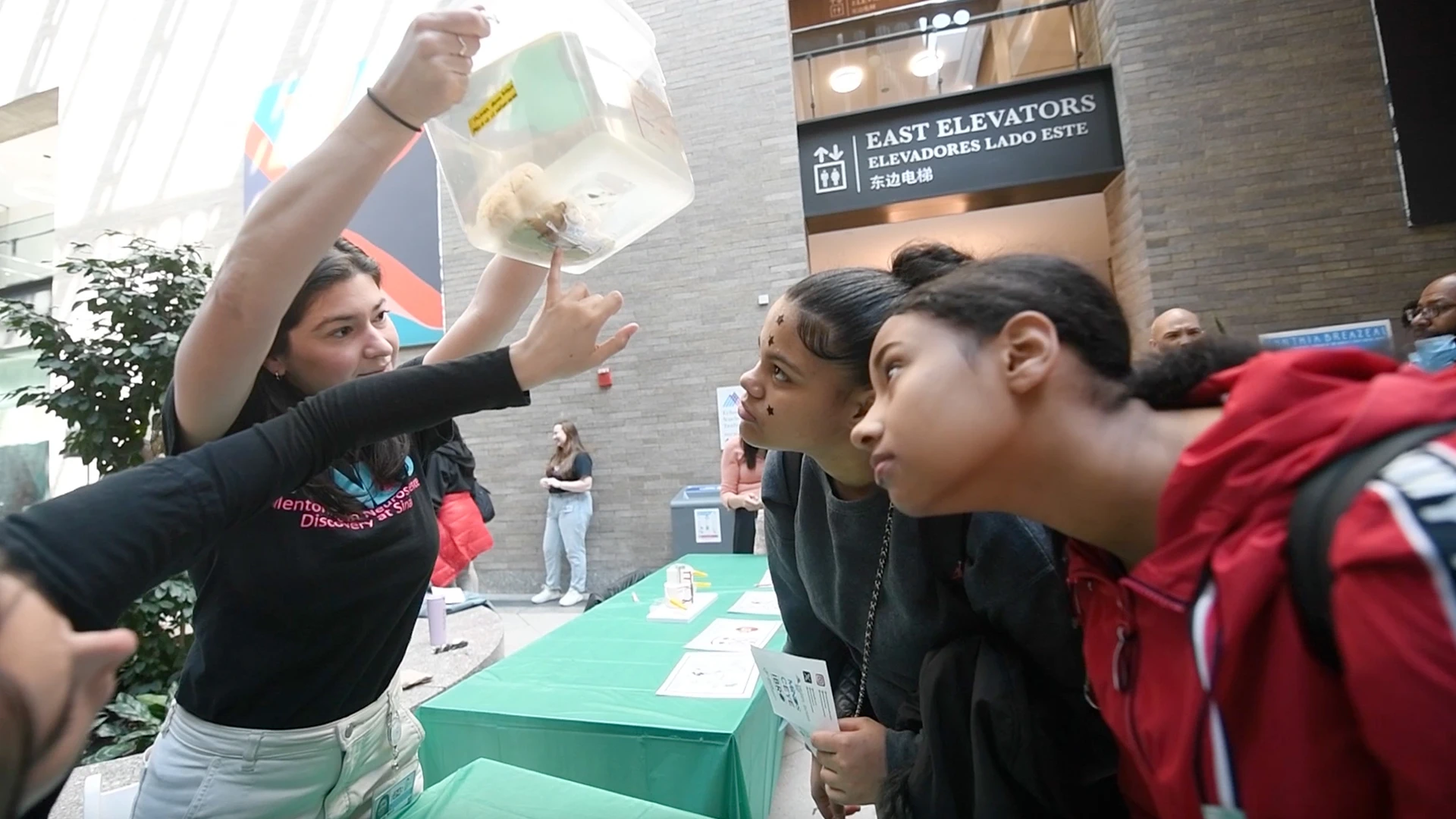
Students were able to compare and learn about a variety of different brain specimens at the Brain Fair.
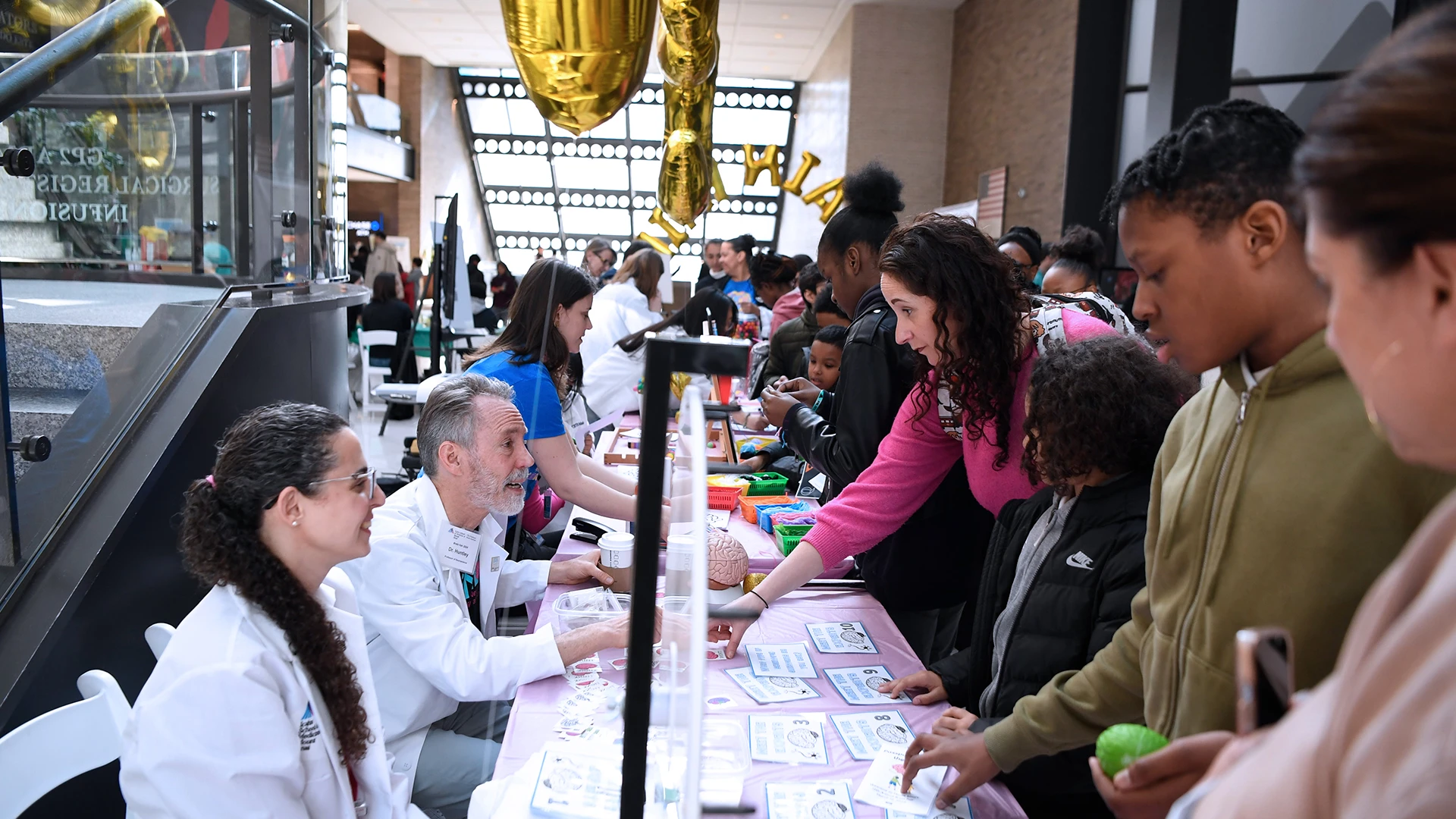
At the Meet the Experts booth, visitors to the Brain Fair could ask faculty members challenging questions about the brain. Faculty volunteers included Hala Harony-Nicolas, PhD, Associate Professor of Neuroscience, and Psychiatry, and George Huntley, PhD, Professor of Neuroscience.

Arun Narasimhan, PhD, Senior Scientist at the Microscopy and Advanced Bioimaging CoRE, explains the nucleus, scaffolding, and energy center of cells to a curious Brain Fair attendee.
More than 600 elementary, middle, and high school students from seven local schools energetically visited 31 booths, interacted with Mount Sinai's top neuroscientists, postdoctoral fellows, and graduate students, and came away with a better understanding of the brain.
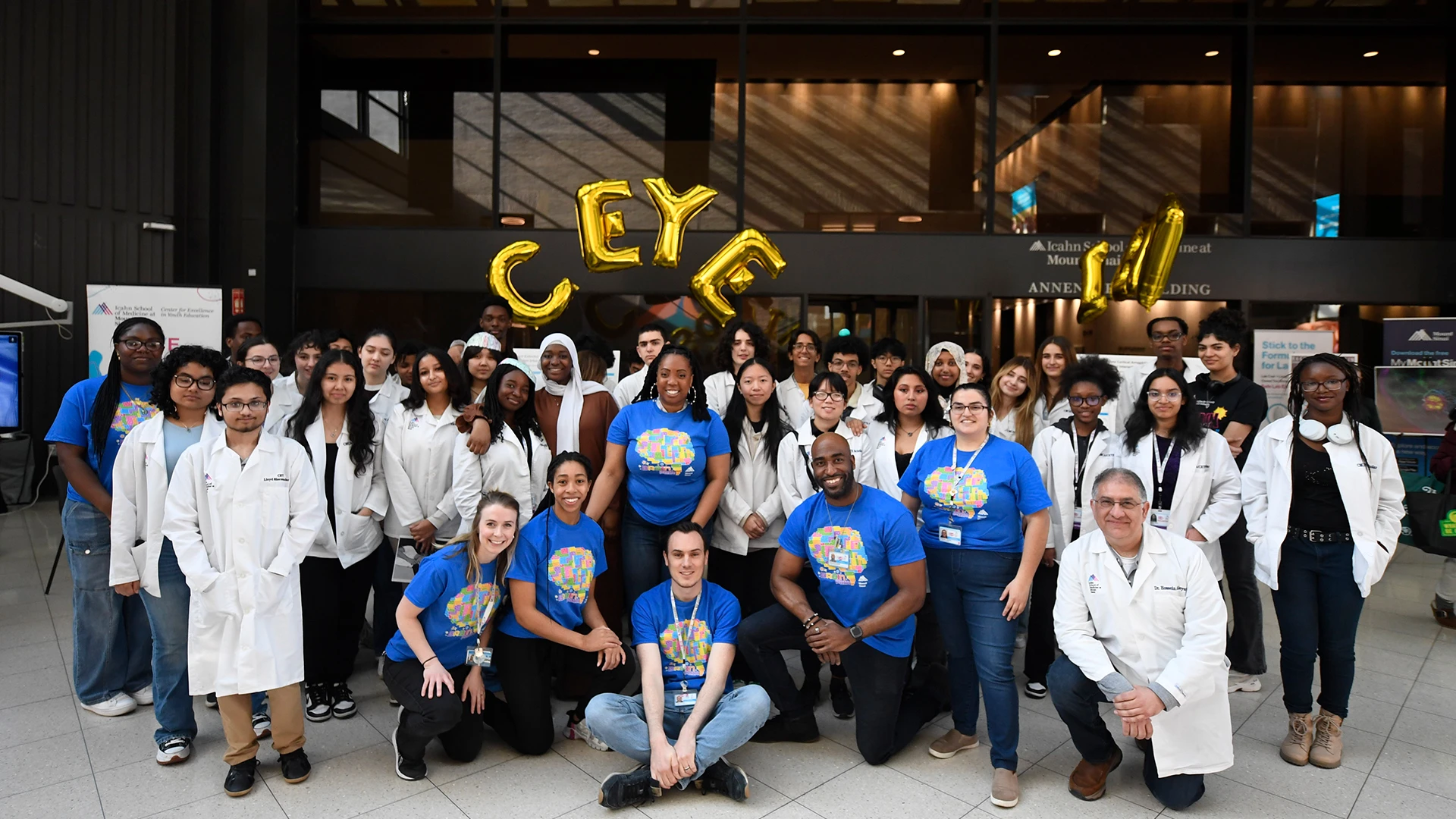
The CEYE team at the Brain Fair with high school students enrolled in the Biomedical Science Enrichment Program and The Lloyd Sherman Scholars Program.
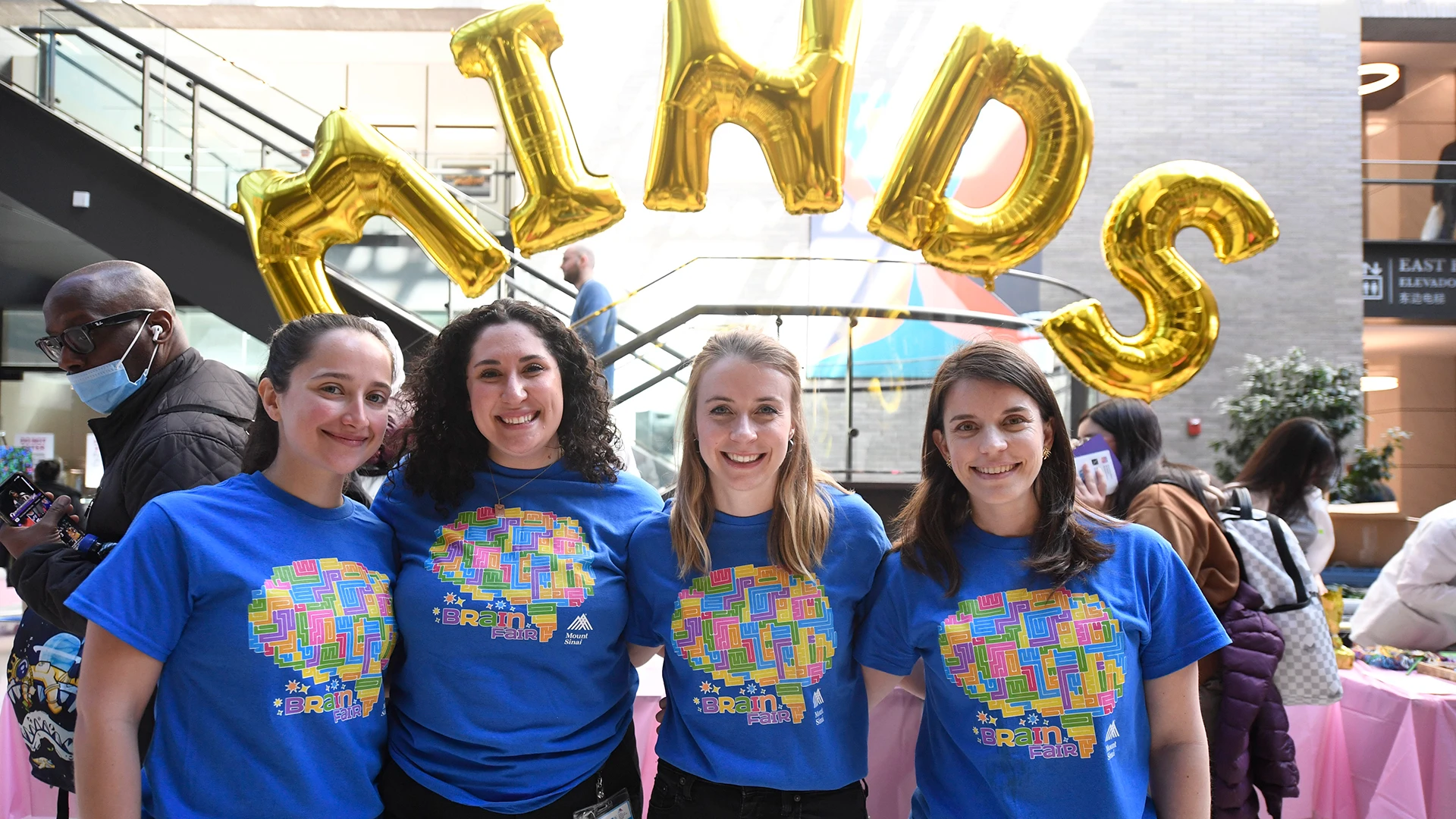
MiNDS leadership at the Brain Fair, from left: Christina Maher, MS, Alexandra Fink, Denise Croote, PhD, and Natalia Biscola, PhD.
The popular event, which has garnered national attention, is a collaboration between the FBI, Mentoring in Neuroscience Discovery at Sinai (MiNDS), the Center for Excellence in Youth Education (CEYE), and the Dana Foundation.
Scenes and sounds from the Brain Fair with Paul J. Kenny, PhD, Ward-Coleman Professor and Chair, Nash Family Department of Neuroscience, and Director of the Drug Discovery Institute, Icahn School of Medicine at Mount Sinai.
The Brain Fair is one of many activities that occur during Brain Awareness Week, including:
The Art of the Brain exhibition, a museum-style display of stunning photographs, medical illustrations, and sculptures celebrates the beauty of the brain as seen through the eyes of Mount Sinai’s leading researchers. Enter the exhibit and take a virtual guided tour.
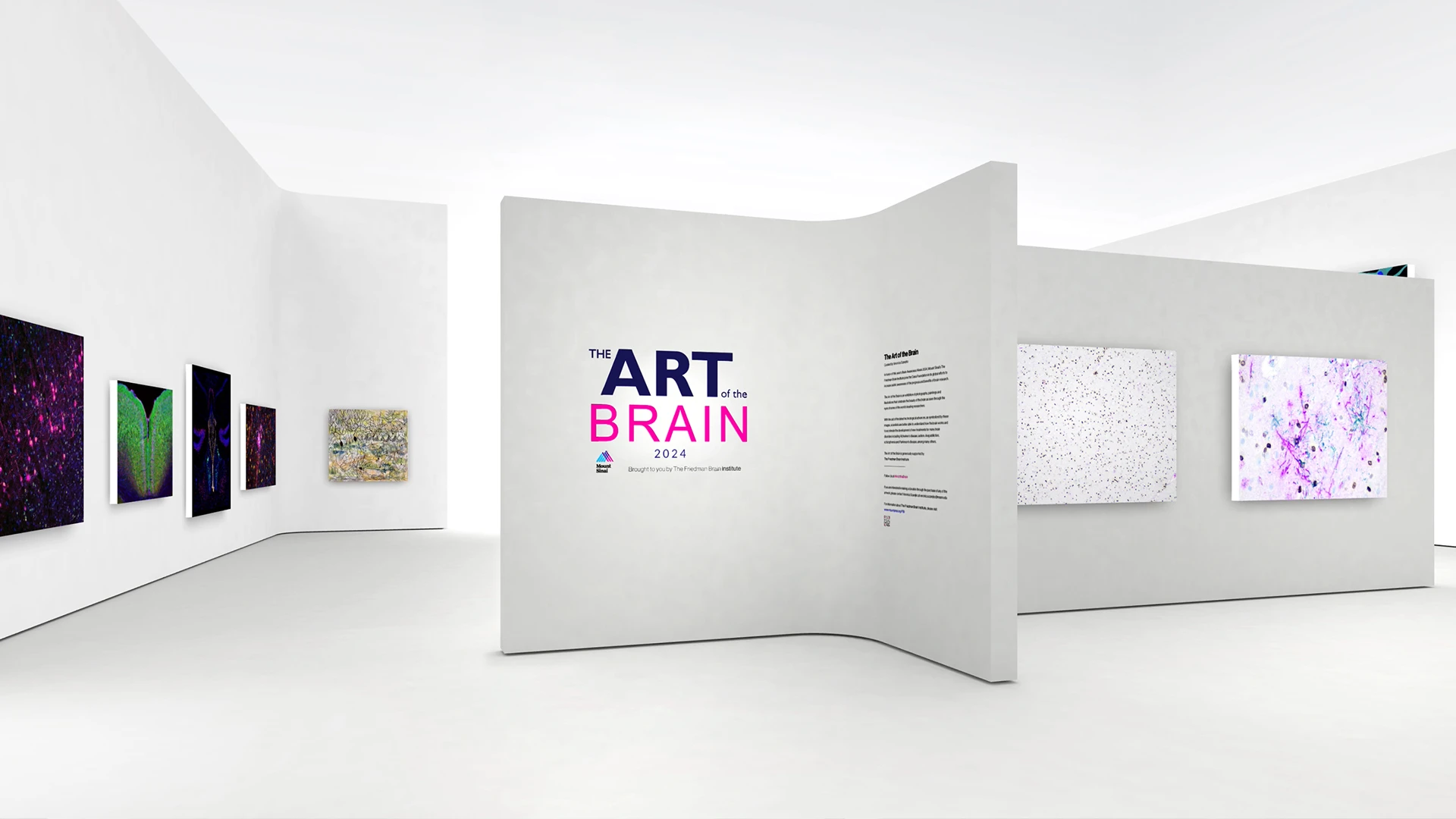
The Art of the Brain is a virtual museum-like exhibit.
“Stories of the Brain and Beyond,” hosted by the FBI and The Story Collider, featured personal stories of neuroscience journeys from five speakers, delivered on stage at Caveat before an audience.
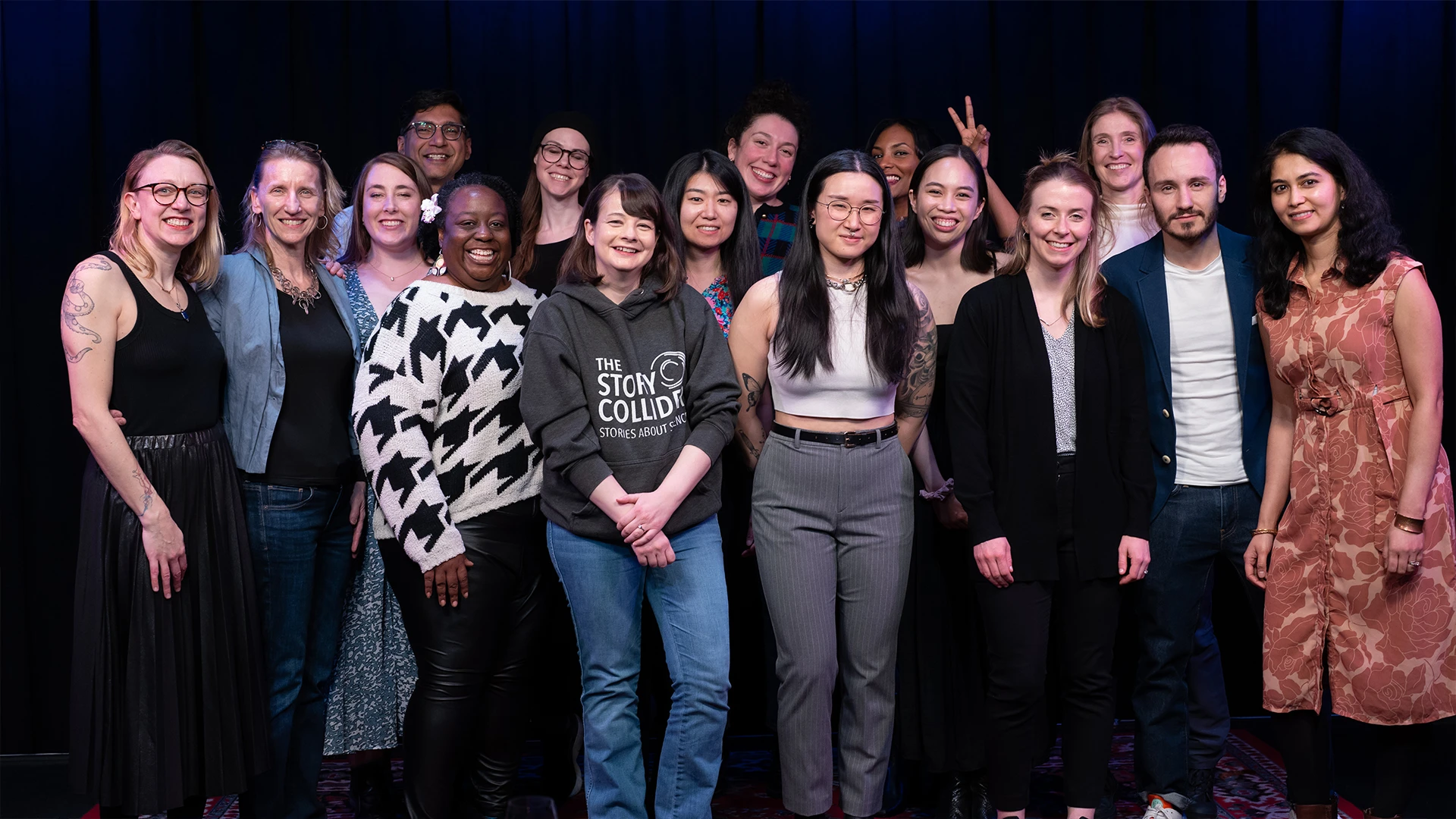
At the Caveat “Stories of the Brain and Beyond” event.
However, the FBI’s commitment to making neuroscience fun, educational, and accessible to school-aged children in East Harlem is an endurable one that extends far beyond Brain Awareness Week.
The FBI works closely with CEYE—a nearly 50-year-old entity that is a unit of the Mount Sinai Health System’s Office for Diversity and Inclusion—for neuroscience education. CEYE sponsors a range of robust school-year and summer pathway programs geared toward youth underrepresented in medicine and science. MiNDS, which was established under the FBI, partners with CEYE to conduct classroom courses at local schools and onsite Mount Sinai laboratory tours and delivers additional online educational content to students.
MiNDS programming includes:
Introduction to the Brain Course at P.S. 171: Students learn the basics of neuroanatomy, from components of individual neurons to complex brain systems. The course, in partnership with CEYE, concludes with a discussion of several neurological and psychiatric disorders and provides tools for students to develop habits that keep their brains healthy.
The ChiCAS (Champions in Critical Analysis of Science) Program: This CEYE program is an exciting hands-on after-school science club for young women attending the Manhattan Center for Science and Mathematics. MiNDS volunteers assist CEYE’s teaching assistant with the lessons and provide career mentorship to 9th- and 10th- grade students interested in STEM professions.
The Art of the Brain Kids Program: Launching in 2024, this program aims to help pre-K and elementary-aged students develop a foundational understanding of the brain. This program features multisensory and engaging art-based lessons to inspire creativity, spark curiosity, and teach young minds that they can be neuroscientists.
Sheep Brain Dissections: MiNDS volunteers take middle school students on a journey through the brain during CEYE’s neuroscience-themed Day with a Scientist session. CEYE’s Day with a Scientist program is a four-part program where students spend the day at Mount Sinai exploring the anatomy, physiology, and pathology of the body’s major organs.
The MiNDS Blog: This is an outlet for Mount Sinai scientists to hone their science communication skills and educate young scholars on the brain. Published articles include fun brain facts, descriptions of Mount Sinai research projects, and trainees’ personal academic experiences.
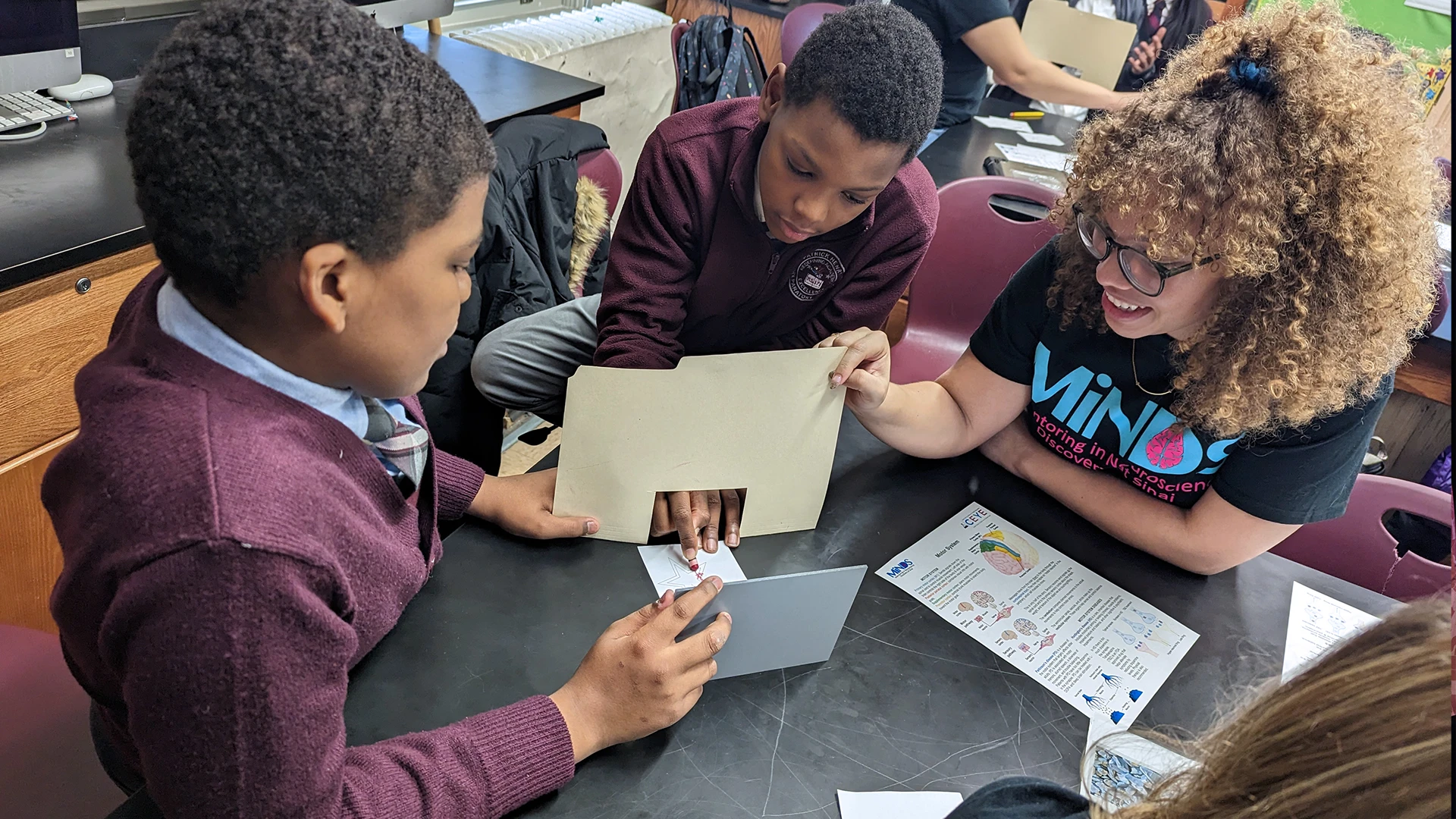
P.S. 171 Patrick Henry seventh graders attempt to draw a star while only looking at their hand in a mirror. Rachel Fisher-Foye, a Neuroscience PhD student at Mount Sinai, stands by to explain how the visual system and the motor system work together to execute different movements.
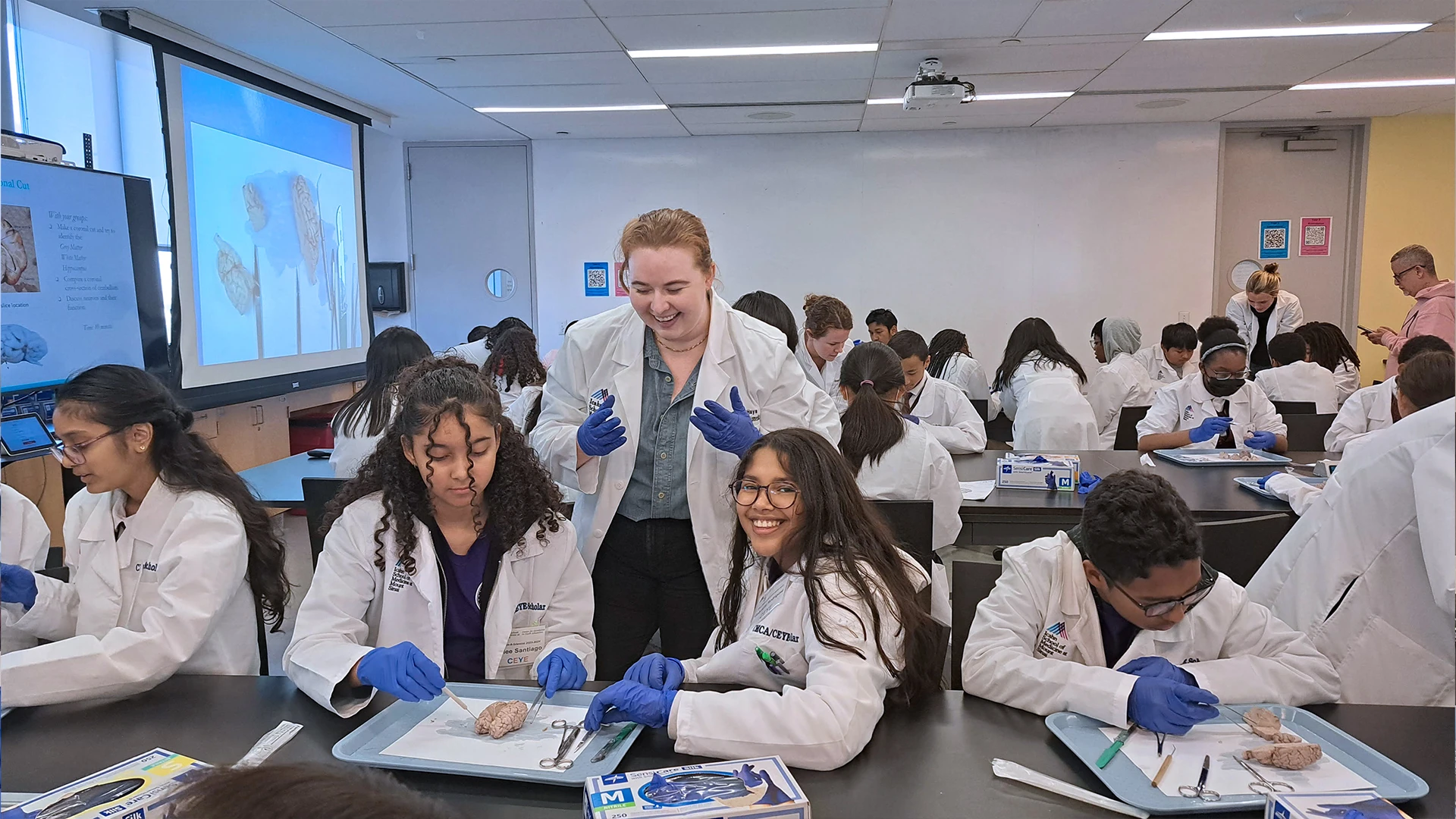
After an anatomy and pathology lesson, Day with a Scientist eighth grade students take a look at a brain for themselves. Guided by Emma Hays, a Neuroscience PhD student at Mount Sinai, students explore the lobes, ventricles, sulci, and gyri of a sheep brain.
Says Kenya Townsend, CEYE Program Director: “Our long-standing partnership with the FBI and MiNDS is a great addition to our CEYE portfolio, and we are very excited about the growth of programs. We are even more happy to be able to recruit the students from our many partner schools and provide them with an opportunity to learn about the brain. Working together, we are on the way to increasing diversity in STEM fields.”
Adds Denise Croote, PhD, MiNDS Director and CEYE instructor: “MiNDS was established to equip scientists with the skills to share their individual passion for neuroscience with students of all ages. Our programs are structured to build connections with our East Harlem community and to convey to young minds that curiosity is the sole prerequisite for science.”
New to the Brain Fair this year were poster presentations by CEYE students who are enrolled in the Biomedical Science Enrichment Program. Read their first-person accounts of what they are learning about science—and themselves—as they conduct research in the labs of renowned scientists [see story].